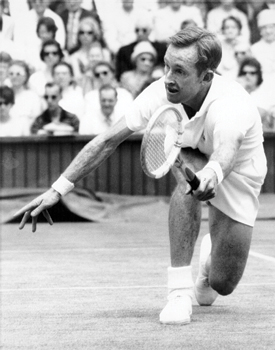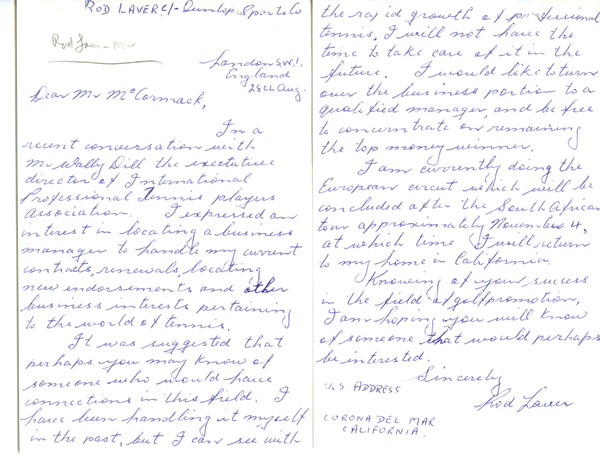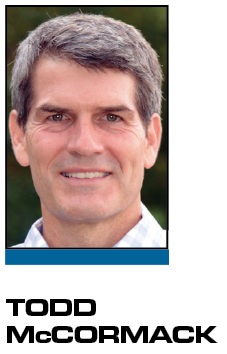■
Editor’s note: The author is the son of Mark McCormack, founder of IMG.
Forty-five years ago last week, Rod Laver graced the cover of Sports Illustrated before the first U.S. Open Tennis Championship in the Open Era. The article’s headline: “Open Season for a Test of Time” was followed by the story teaser, “He so excels the field that he soon may not have any competition but the memory of past immortals.”
While he didn’t even make it to the finals of that year’s event (when did the SI cover jinx begin?), Laver is still the only tennis player to win the Grand Slam twice in his career and is the only male player to have achieved this feat since the best amateurs and pros began competing together. As I retraced Laver’s early professional career, the question gnawing within me was why so many of today’s superstars seem to be failing the test of time.
I’ve been fortunate to witness the world of professional sports from the inside out, watching talent being managed in conference rooms rather than cheering for my sports idols from the stands. Recently, two experiences made me pause and consider the stark contrast between the superstars of yesterday and today and what it means to be a great champion, an icon on the path to immortality.
The first was reading David Brooks’ New York Times commentary “The A-Rod Problem,” in which he grapples with Alex Rodriguez’s suspension from baseball through the 2014 season. The second instance was stumbling across the above-mentioned Laver article, found among my father’s letters and memos, documenting the birth of IMG’s tennis division and signing Laver as its first tennis client.
Brooks concludes that A-Rod’s fatal flaw was not one bad decision but rather being caught in a vicious cycle of the “perils of self-preoccupation.” A-Rod was “always observing himself, and measuring to see if he lives up to the image of a superstar.” An entourage of publicists and agents bolstered and aided the construction of “the marketing facade of A-Rod Inc.”
 |
Photo by: GETTY IMAGES
|
A week after reading Brooks’ column, when I was scouring through my father’s “Laver file” (now being catalogued and preserved with all of his papers at the University of Massachusetts Amherst), I came across a handwritten letter my father received from Laver in late summer of 1966 asking for help (see full letter below):
“I can see with the rapid growth of professional tennis … I would like to turn over the business portion to a qualified manager.”
If he was trying to convince my father to take him on personally and expand IMG beyond its roots in golf, he didn’t ask directly:
“I am hoping you will know of someone that would perhaps be interested.”
My father’s reply to Laver on Sept. 14, 1966, didn’t sound like someone eager to build a global, multisports agency, which is even more surprising given that Laver had already won his first grand slam in 1962 and many of the initial, albeit modest, pro events. His response to Laver began:
“Although I am not particularly sure that I would be able to do very much for you in light of the very difficult time professional tennis is presently having getting off the ground, I would very much like to meet you and sit down and talk about it at some time in the not too distant future.”
It was almost two years later, on June 18, 1968, before my father wrote again, sounding a bit more eager:
“As I said to you on the telephone prior to leaving for Europe some weeks ago, I would very much like to sit down with you and talk about the overall situation with a view towards working out something that would be mutually satisfactory.”
After Laver’s Wimbledon victory in 1968, activity throughout IMG’s ranks increased. Laver was signed as IMG’s first tennis client on Sept. 19, 1968.
I was astonished by how much has changed in player recruiting over the past four decades, but what struck me most was the civility of Laver’s letter. Can you imagine any successful celebrity from sports, politics or business, at the pinnacle of their achievement, penning such a note today? You can learn a lot about a person by how they ask for help and share their shortcomings. As Kim Chapin wrote in that SI cover story 45 years ago, when Laver was “away from the tennis court … the ingrained nervous viciousness that distinguishes him so in action dissipates rapidly, and Laver becomes more like something out of a Boy Scout manual — shy, modest, honest, clean, thrifty, neat, kind.”
Image isn’t everything when one loses any semblance of authenticity and self. Winning isn’t the only thing when one wins by cheating. The person with the most toys (or Twitter followers) surely doesn’t win the most important game.
We will see how the A-Rod story plays out, but as we learned from the Lance Armstrong affair, it seems like we’ve seen this show before. It is clear Laver fought for victory and riches as hard as any other athlete of this current generation of superstars. But he also must have read and understood the wisdom of the Kipling couplet etched on the wall of the All England Club as he walked onto Centre Court for one of his four Wimbledon singles titles:
If you can meet with Triumph and Disaster and
Treat those two impostors just the same …
Surely one’s path to immortality is defined not by wins and losses alone but also by remembering that gifts and talents don’t exempt superstars from meeting what I have to feel is an easier challenge: being a decent, kind human being, who keeps perspective on one’s life when showered with media attention and public adulation.
I’m glad to know a Rod who has done both.
Todd McCormack works with IMG and other early stage technology companies on digital media strategy. He also coordinates the McCormack family’s partnership with the University of Massachusetts to preserve the early history of the sports marketing industry his father pioneered.







